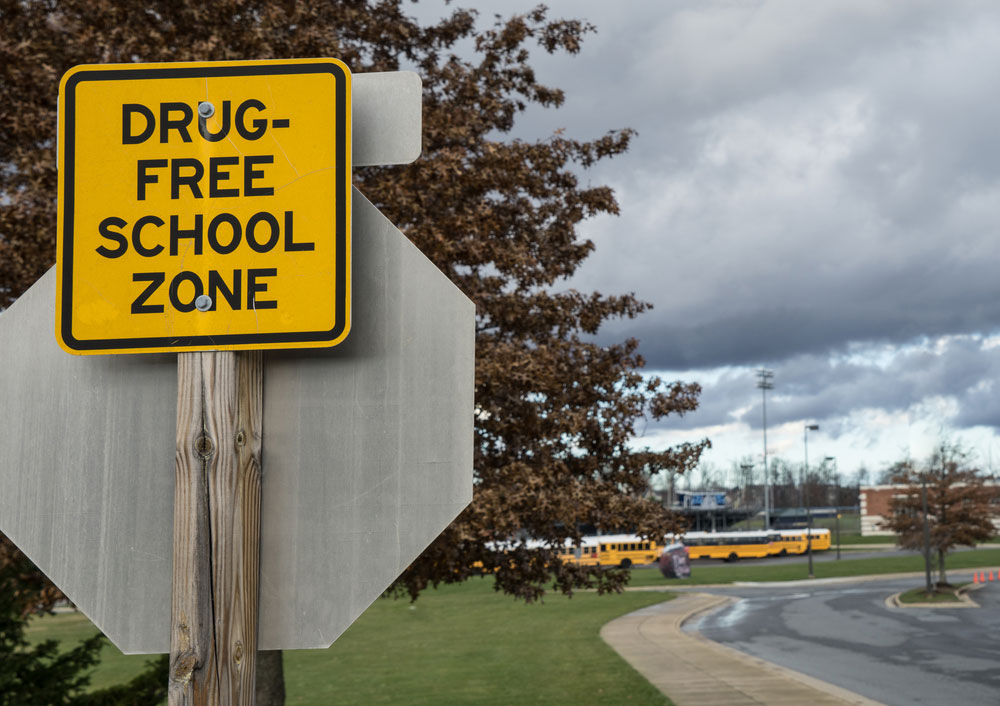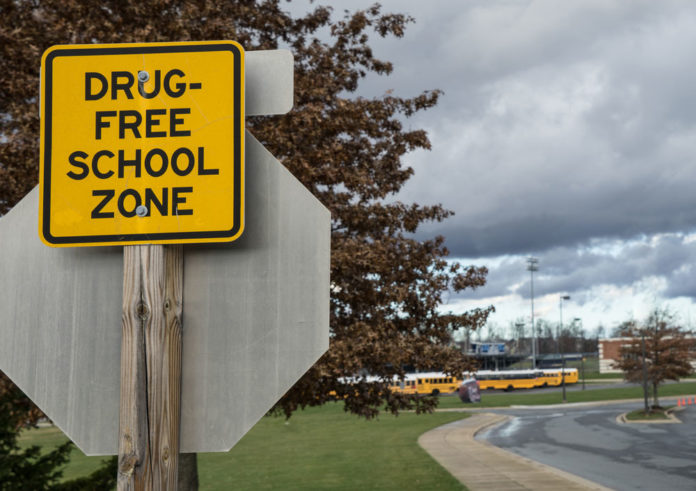A recent study shows that many American citizens recognize drug abuse is a national problem but most of them are not aware of the impact in their own neighborhoods.
The epidemic has affected every demographic, from senior citizens to teenagers and athletes.
However, substance misuse among adolescents has been a decades-long concern. Rising rates of teen drug abuse spurred the government to establish new preventative measures and awareness programs with varying degrees of success.
Entering the 21st century, the drug landscape changed. Not only has the drug market expanded to the internet and social media, new code names have found their way into students’ vocabulary and usage trends shifted.
Teens and Anti-Drug PSAs
Since the 1980s, the U.S. government has channeled millions of dollars into bankrolling anti-drug campaigns. Some of the most recognizable slogans of the public service announcements on TV were ‘I learned it by watching you’ and ‘this is your brain on drugs.’
However, the number of PSAs have dwindled, despite the release of a select few on the internet and social media.
Numerous studies have shown how ineffective a majority of these PSAs were. According to a 2016 article about behavioral change interventions, many well intended approaches backfire and fail to influence their target audience for different reasons.
The authors highlighted two possible reasons why the ‘this is your brain on drugs’ advertisement failed. One unintentional outcome of the campaign was how easily the saying and its scenarios could be repurposed for other uses, such as comedic material. This technique is known as message hijacking. In many cases, the ad campaign devolved into parody sketches and fuel for meme generators. Therefore the original intent of the message and its credibility is lost the more it becomes skewered by the media. The authors also associate the infamous slogan with the notion that if the principle is repeated ad nauseum, then viewers may develop a mistrust of the projected message.
When the ‘Above the Influence’ campaign was introduced in 2006, a new approach was implemented that has seen some success. In 2014, the campaign transitioned from being a federal program to one run by the nonprofit organization Partnership for Drug-Free Kids. Above the Influence’s effectiveness lay in how it focused the PSAs around the choices teens have to make when surrounded by a plethora of negative influences and emphasized the message of staying true to oneself.
Concurrent with the image of developing as a person in a drug-free lifestyle are the number of programs available around the country that have helped numerous adolescents fill their social time with healthy alternatives to drug use. One nonprofit organization called the Keala Foundation located on the island of Kauai has provided adolescents with positive role models and a safe space where they can spend time building bonds with other people their age after school. In addition to providing nutritious meals, Keala offers activities that promote personal fitness and community.
Factors Influencing Teen Drug Use
Adolescents are surrounded by a myriad of influences. Media’s prominence in kids’ lives is perhaps higher than ever before. In fact, a recent study found that high schoolers are more inclined to scroll endlessly through social media platforms than read a book in their free time.
With so much exposure to the internet and television, teens are at risk of being introduced to drugs and alcohol. Whereas TV spots for anti-drug campaigns had little or no effect in diverting children from drug use, other types of advertisements were more effective. For example, cigarette and alcohol ads have been found to influence children and teens. While limiting teen exposure to R-rated movies may deter them from using alcohol or marijuana, one study found that teens were most likely to consume alcohol brands they were familiar with through TV ads.
While media exposure to drugs and alcohol is a chief concern to parents and educators, adolescents are also introduced to drug use in other ways.
A large percentage of teens across the U.S. may be influenced to use drugs by their peers. In the event a student turns to a teacher or school official for help, many times they’ll say that they were peer pressured or told that doing drugs were cool.
According to a 2012 survey by the National Centers on Addiction and Substance Abuse at Columbia University, nearly 90 percent of student participants noted that some of their friends drink, smoke or do drugs during the school day. In addition, 75 percent of students between the ages of 12 and 17 responded that photos seen on social media platforms of kids drinking or smoking marijuana made them want to do the same. Approximately half of them stated that the kids appeared to be having fun.
Since student drug use can also be affected by their home environments, many organizations have assisted kids and teens whose parents are seeking addiction treatment. The Kids Power program in Grand Island, provided by the Central Nebraska Council on Alcoholism and Addictions, offers a safe space filled with group activities for children to learn how to cope with their feelings and understand their parents’ substance use disorders. Kids Power has garnered the support of Dr. Jerry Moe, the National Director of the Children’s Program at the Betty Ford Center.
Drug Use Trends Among Adolescents
In 2017, the University of Michigan released the results of its Monitoring the Future (MTF) survey, which examined drug use trends among eighth-, 10th- and 12th-grade students. While teen cigarette use has continued to decline — perhaps reaching the lowest rates since the 1970s — marijuana use has increased in all three grades. Hookah use among high school seniors, which had steadily increased until 2014, continued to decline.
Eighth graders appeared to experiment with inhalants more in 2017; the class of drugs had previously been on a decline, researchers noted. Furthermore, general alcohol use has seen a steady decline, despite some spikes in binge drinking rates among high school students.
MTF researchers also expanded the questionnaire to measure the use of vaping devices among students. While there appeared to be a decline in the rate of overall vape use among students, there were some spikes in terms of what products were vaped — including nicotine, marijuana and flavors. According to the data, researchers are uncertain whether vaping trends have plateaued among high school students.
A study by the U.S. Centers for Disease Control and Prevention (CDC) analyzed nearly 15,000 questionnaires completed by high school students from 144 public and charter schools around the country. The CDC 2017 Youth Risk Behavior Survey reported similar statistics in regard to teenage drug abuse. The rate of students who admitted to using illicit drugs decreased from 22.6 percent to 14 percent between 2007 and 2017. In addition, approximately 14 percent of students reported misusing prescription drugs, including hydrocodone and and oxycodone.
An article published in Pediatrics, the official journal of the American Academy of Pediatrics, analyzed MTF data from 1976 to 2015 and concluded that while prescription opioid abuse was reported by nearly 25 percent of high school senior participants, there was a significant decrease in use between 2013 and 2015.
Drug and Alcohol Prevention Measures
Parents and officials from school districts around the country have sought avenues to implement better drug and alcohol prevention programs for adolescents.
While school suspensions and stints in juvenile halls are still common for students found in violation of school codes for drug abuse, many schools have collaborated with community organizations to help youth enter treatment. For example, school district officials in Lee County, Alabama arranged training sessions to educate teachers on how to recognize drug abuse symptoms, lead interventions and connect students to local addiction treatment resources.
One resource that has been getting more traction in recent years are recovery high schools. According to the Association of Recovery Schools, recovery high schools allow students to continue their education and earn their diploma while undergoing a recovery program aimed at addressing each individual’s substance use disorder and co-occurring disorders such as depression or anxiety. Staff often consist of substance abuse healthcare professionals and mental health counselors as well as teachers and administrative personnel.
One school district in New Jersey has involved parents more directly in drug prevention efforts by implementing a mandatory opioid seminar before they can attend their children’s eighth grade graduation.
Researchers are also exploring approaches to build drug prevention programs at the community level around the country. Members of West Virginia University’s School of Public Health and other professionals have been educating residents around the U.S. and other countries on how to implement long-term prevention models to help students, based off the success of the Youth of Iceland model.















